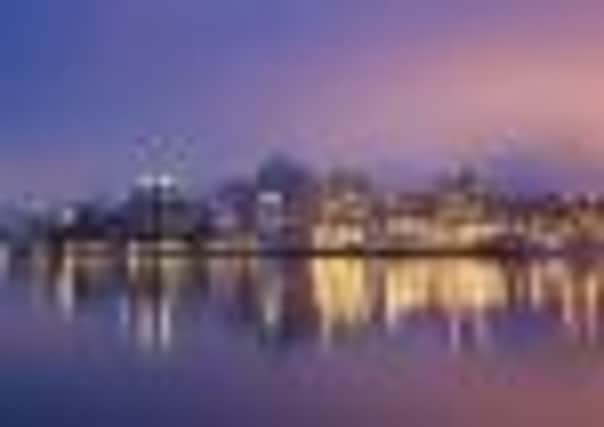Scottish place names abroad: Nova Scotia


History
The Mi’kmaq people had lived in Nova Scotia for centuries, with the French arriving at the turn of the 17th century and creating the first European settlement in Canada at Port Royal, later known as Acadia. Most of Acadia became part of the current Nova Scotia in the 1760s, with a number of Scottish settlers arriving in 1773.
Acadia was eventually renamed Halifax in 1749, and in 1755, most of the French settlers were deported and their place taken by New England Planters arriving between 1759-1768.
Advertisement
Hide AdAdvertisement
Hide Ad

The American Civil War also helped shape the province, with thousands of Nova Scotians fighting for the North. Although the province was declared neutral, it continued to trade with the North and South throughout the conflict, boosting trade and enjoying an economic boom, something reflected in its shipbuilding trade which took off in the late 19th century. The province was also home to Samuel Cunard, who established the Cunard Line (builders of ships including the Titanic and the Carpathia). In a link that has come full circle, the province today gains a lot of trade through visiting cruise ships.
Culture
Nova Scotia has long been lauded as a centre for the arts, with two art colleges situated in Halifax and several writing and publishing industries to say nothing of a thriving film industry. Actors Ellen Page, Donald Sutherland and Arthur Kennedy call the province home, whilst the majority of tourism stems from a focus on Scottish heritage, as well as other ethnic aspects. Nova Scotia’s scenery is also a major part of its tourism project, with two national parks and numerous historical sites being situated in the province.
Government
Nova Scotia’s governance follows the construct of constitutional monarchy; that is, the monarchy is the foundation of the executive, legislative and judicial branches, with the sovereign being Queen Elizabeth II, although the current Lieutenant Governor of Nova Scotia (currently Mayann Francis) carries out the majority of royal duties in the province, as the Queen’s representative.
Scottish Links
Nova Scotia hosts a number of festivals mirroring those in Scotland, such as the Celtic Colours festival, the Nova Scotia Gaelic Mod, Royal Nova Scotia International Tattoo, the Atlantic Film Festival and the Atlantic Fringe Festival. 0.10% of Nova Scotians call Gaelic their first language, with nearly a quarter of the total population referring to themselves as Scottish.
There are also a number of Scottish place names within the province, including Aberdeen (in the county of Inverness!), three different Argyles, Knoydart, a Glasgow, but no Edinburgh and the inventive Scotch Village.
Facts and figures
Premier: Darrell Dexter
Lieutenant General: Mayann Francis
Capital: Halifax
Population: 921,727 (as of 2011)
Area: 55,283 km2
Language(s): English (92.5%), French (3.62%)
Religion: Predominantly Roman-Catholic, 327,940 (37%)
Confederation: July 1, 1867
Did you know?
Rather topically, the Titanic, including the 1997 film produced by James Cameron and starring Kate Winslet and Leonardo DiCaprio, shares a lot of links with Nova Scotia.
• The ship itself was part of the Cunard Line, established by Samuel Cunard who was born in Halifax in 1787.
• The film was produced in Nova Scotia.
Advertisement
Hide AdAdvertisement
Hide Ad• George Wright, a millionaire who perished on the ship, was the only resident of Halifax on board, and his house can still be found on Young Avenue in the town.
• Halifax was home to the cable ships - used to repair underwater telegraph cables between Europe and North America - that brought the dead to the capital for burial.